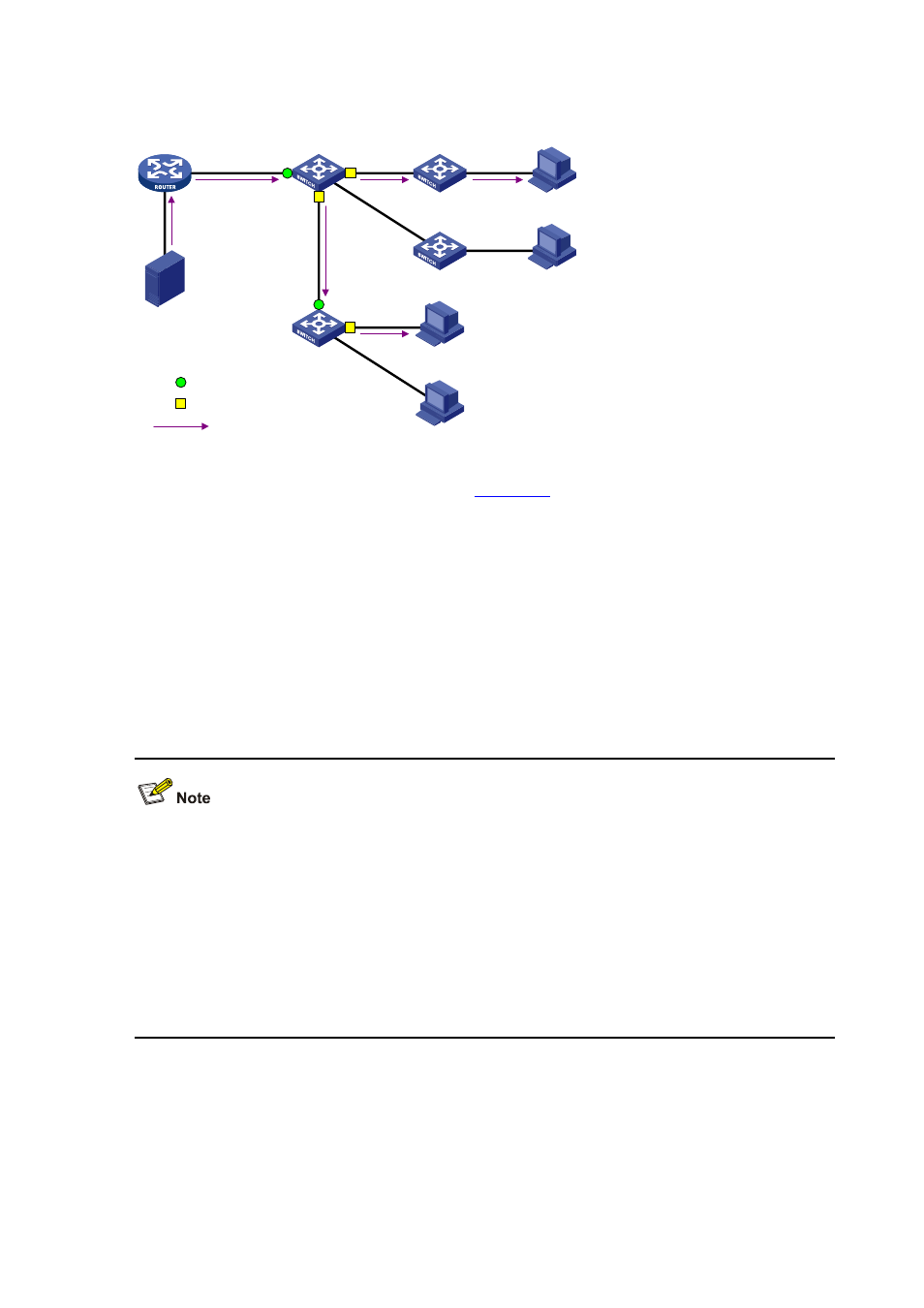H3C Technologies H3C S7500E Series Switches User Manual
Page 259

9-3
Figure 9-2 MLD snooping related ports
Router A
Switch A
Switch B
GE2/0/1
GE2/0/2
GE2/0/3
GE2/0/1
GE2/0/2
Receiver
Receiver
Host A
Host B
Host C
Host D
Source
IPv6 multicast packets
Router port
Member port
Ports involved in MLD snooping, as shown in
, are described as follows:
z
Router port: A router port is a port on the Ethernet switch that leads switch towards the
Layer-3 multicast device (DR or MLD querier). In the figure, GigabitEthernet 2/0/1 of Switch
A and GigabitEthernet 2/0/1 of Switch B are router ports. The switch registers all its local
router ports in its router port list.
z
Member port: A member port (also known as IPv6 multicast group member port) is a port on
the Ethernet switch that leads towards multicast group members. In the figure,
GigabitEthernet 2/0/2 and GigabitEthernet 2/0/3 of Switch A and GigabitEthernet 2/0/2 of
Switch B are member ports. The switch registers all the member ports on the local device in
its MLD snooping forwarding table.
z
Whenever mentioned in this document, a router port is a router-connecting port on the
switch, rather than a port on a router.
z
Unless otherwise specified, router/member ports mentioned in this document include static
and dynamic ports.
z
On an MLD snooping-enabled switch, the ports that received MLD general queries with the
source address other than 0::0 or IPv6 PIM hello messages are dynamic router ports. For
details about IPv6 PIM hello messages, see IPv6 PIM Configuration of the IP Multicast
Configuration Guide.